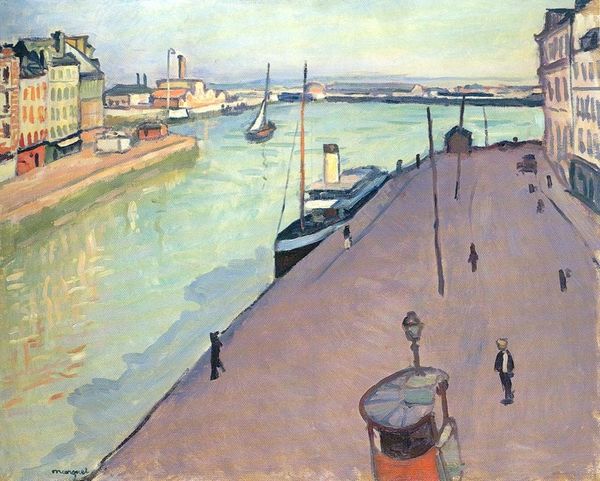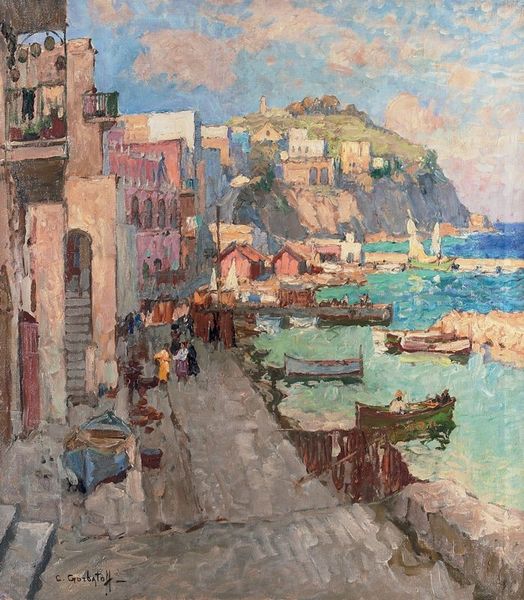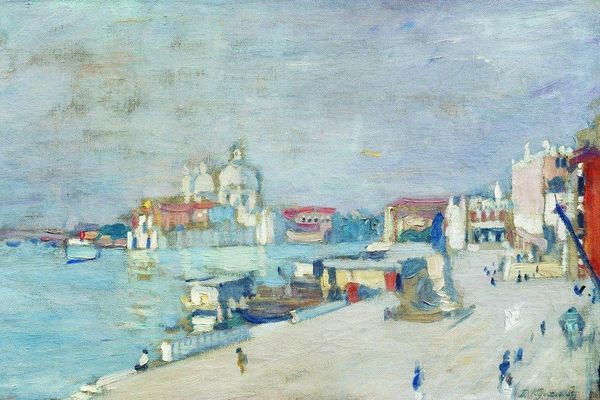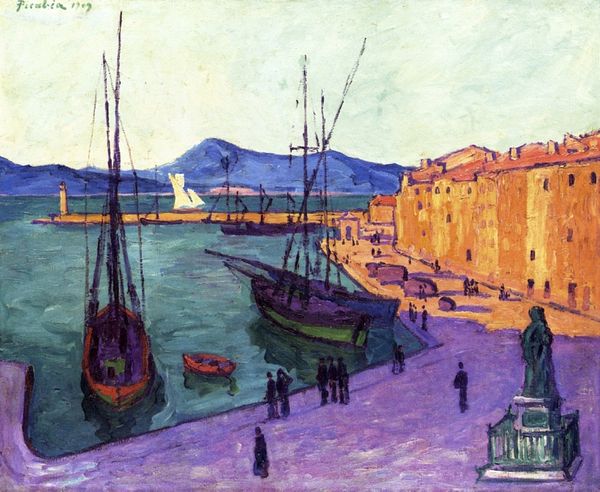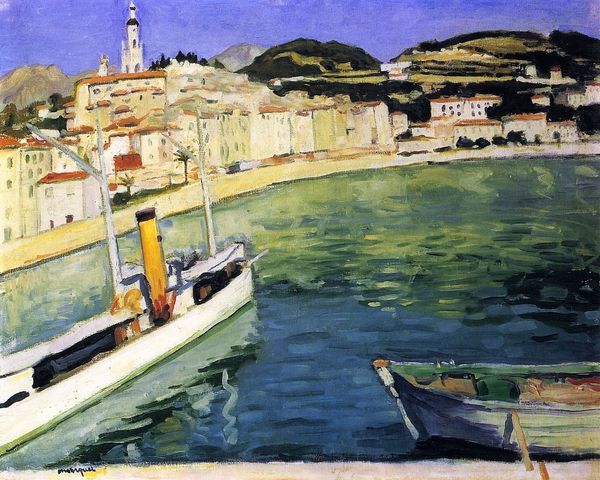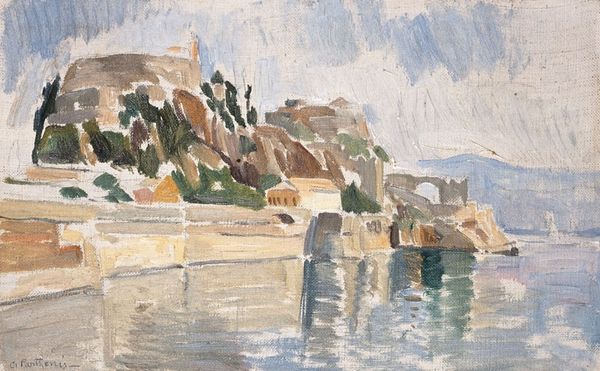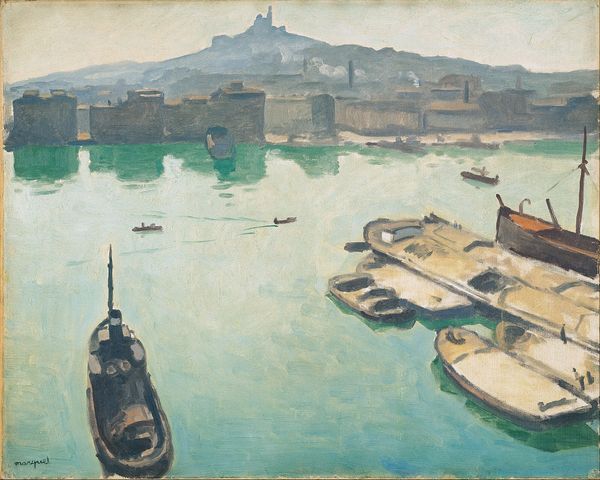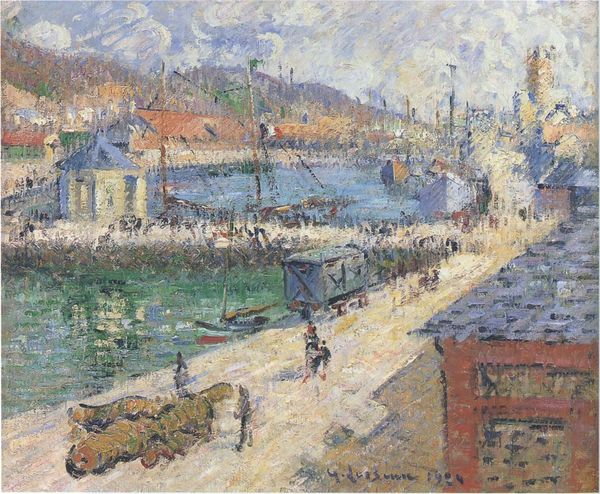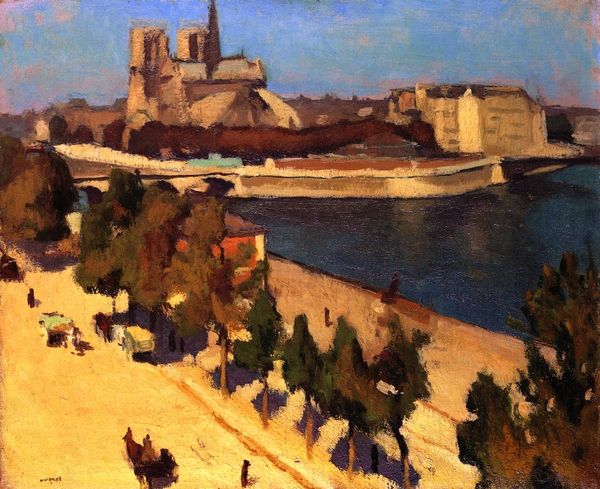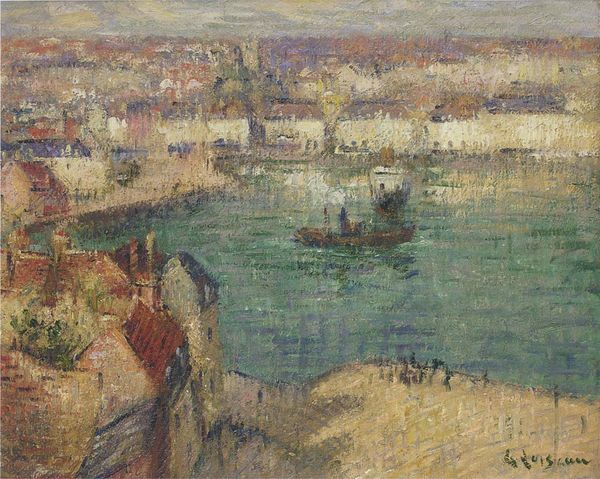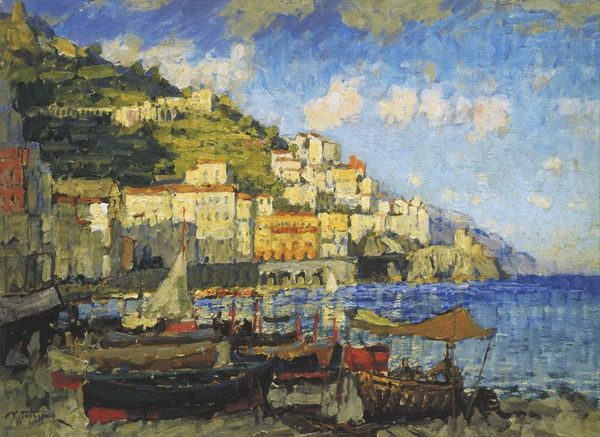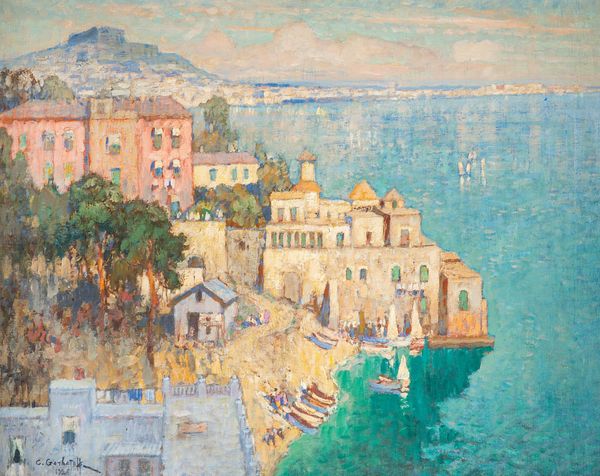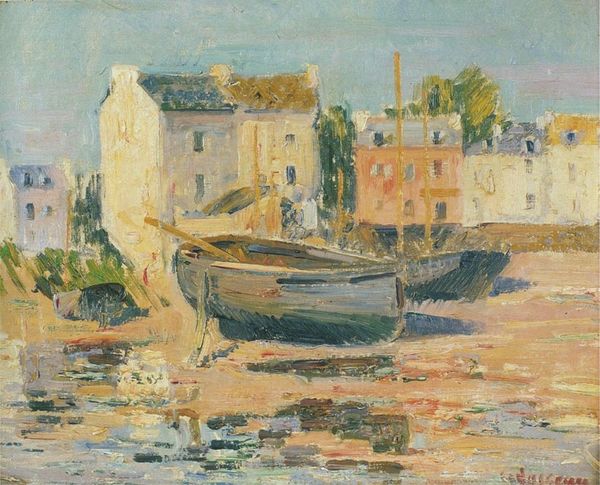
Copyright: Public domain
Curator: Before us is Albert Marquet's "A Horse in Marseille," painted in 1916. Editor: My immediate reaction is a kind of muted tranquility. The tones are soft, almost monochromatic, yet the composition is so engaging, especially the horse and the diminutive figures dotted around the harbor. Curator: Indeed, Marquet’s application of Fauvist principles, distilled into a more subdued palette, allows us to dissect the formal arrangement. The composition pivots around the waterfront with subtle planar shifts. The interplay between the foreground’s strong horizontals and the undulating cityscape generates a fascinating spatial dynamic. Editor: It’s interesting how this harbor scene captures a specific time and place – Marseille during the Great War. How do we understand the relative quiet depicted here? Is it escapism, or does the image represent Marseille’s strategic, relatively undisturbed role compared to other French locations? Curator: The neutrality of the strokes allows the painting to function on multiple symbolic registers. It’s the geometry of the human presence alongside the equine and architectural elements. We can contemplate these forms divorced from historical context. The artist's careful orchestration allows for a layered engagement. Editor: But to strip away the socio-political context would be reductive, wouldn’t it? Consider how war influenced artists’ thematic choices, prompting the representation of everyday resilience or anxiety amid external chaos. The presence of the working animal evokes both timeless rural existence and urgent urban need. Curator: Perhaps, but look at how the brushstrokes coalesce into these definitive shapes – the rigid angles against fluid forms! It reveals an internal artistic logic before external conditions come to bear upon it. Editor: I concede there's elegance in the compositional rigor, but let’s remember that paintings engage in dialog with their temporal context. It helps unlock richer understandings. Curator: A valuable point. But on closer inspection, isn't the formal simplicity its enduring achievement? Editor: I agree that considering both its historical placement and technical form creates a fuller viewing experience. Curator: Precisely. Art as visual experience embedded in layers of history.
Comments
No comments
Be the first to comment and join the conversation on the ultimate creative platform.
